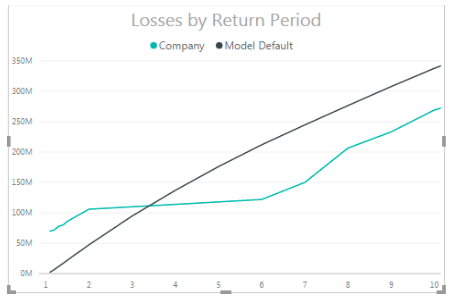On some accounts, your commission payments may be too high. On some accounts, your commission payments may be too low. And on some accounts, your commission payments may be juuusst right.
When the commissions are too high or too low, you need to make adjustments. And, whether they are too high, too low or just right, you need to be discussing your compensation with your clients. To make the right adjustment, the discussion is going to have to include a
conversation about fees.
As scary as the thought of finding a bear in your bed might be, it likely pales in comparison to the level of fear insurance advisers experience when thinking about disclosing their compensation.
Which is it?
On the one hand, brokers complain to the insurance companies that they’re not being paid enough, but, at the same time, the thought of sharing your level of compensation with clients probably causes you to throw up in your mouth a little bit. You know as well as I do, this picture ain’t right.
I talked recently about
breaking dependence on carrier commissions, and, while that may sound like great advice, I realize it’s not something that’s necessarily easy to do. Getting started is the hardest part, but your business depends on getting it figured out.
Not facing account-by-account profitability head-on also leaves your business in a very dangerous place. And, when it comes to the profitability of your business, details matter. If you only look at your business from a simplistic lens of overall profitable vs. unprofitable, you miss out on the crucial details about how you’re achieving profitability.
How you get to profitability DOES matter. The viability and longevity of the business DOES depend on how healthy the book of business is that you’ve built. You need to look at it on an account-by-account basis, now more than ever.
Agencies can no longer afford to have this
laissez faire attitude about the revenue that fuels their business. Just because you have checks in the checkbook doesn’t mean you have cash in the account, let alone a healthy bank account.
See also: ‘Agency 2020’: Can You Get There? (Part 1)
You deliver value in two ways
You get paid for the value you deliver, right?
Of course, one of the ways you deliver value is by recommending the right insurance solutions to address your clients' insurance needs and helping them effectively use those products.
But, you also know that distributing insurance products to your clients is only one part of what you need to be competitive. Which leads us to the second way you deliver value: value-added services/non-insurance solutions to help clients address their non-insurance needs, as well.
Agencies choose to invest heavily in every value-added service that comes along because you know your clients can benefit from these resources.
However, for most of you, the only revenue you receive is the commission from the carriers for the placement of the insurance product. For way too many of you, the thought of charging fees for these non-insurance solutions scares you, and you simply give them away for free.
A valuable solution has just been completely de-valued.
Profitable should never subsidize unprofitable
You rationalize, “As long as I have bottom line profitability, what does it matter if I give services away?” You’re lulled into thinking that it’s not necessary to worry about profitability on an account-by-account basis.
But you should.
We analyze books of business all the time, and the financial profiles are extremely consistent. The bottom half of a book of business (by case count) typically drives less than 7% of revenue, while the top 5% of a book (by case count) drives about 30%.
While you may be satisfied with whatever margin reaches the bottom line, it’s not an equitable path you are taking to get there. Recognize that you are being underpaid on at least half of your book of business while being overpaid by the top tier.
You are forcing your best clients to subsidize your least attractive ones.
Value delivered to clients ≈Total compensation received
This compensation equation must be applied fairly to every client. To do so, you have to be clear about
how you deliver value, as well as what
fair compensation is for the value delivered.
Remember, this equation is about the total value you deliver the client. Just because the carrier pays you commission at a certain level does not mean the client is receiving value commensurate with that level of compensation you receive.
Commissions are payment for the value you deliver the carrier by distributing its insurance product; it has nothing to do with value delivered to your client.
Here’s the litmus test. If there were no commissions and you had to charge a fee to the client for the placement and servicing of the insurance product, would you be able to charge a fee equal to your current commission? If not, you are being overpaid for that service, at least from your client’s perspective.
Establish value for everything you do
While it isn’t necessarily easy to do,
you need to develop fee schedules. This allows you to establish appropriate compensation for the effort you put forth and the value you deliver for every solution/service you deliver your clients. This schedule should include both insurance and non-insurance items.
You may not find this to be an easy task, but it’s simply a requirement in this equation. Establishing reasonable fees for value delivered is one of the most basic elements of running a business.
Once you have these schedules determined, it now becomes easier to evaluate if you are being paid appropriately for each client. Add up the value of the services you provide for each client and compare it against the compensation you are receiving.
The Three Bears compensation scenarios
First of all, realize that just because two clients may have similar profiles (number of employees, structure of benefit program, etc.) doesn’t mean they should pay you the same amount. You may need to charge a “PIA Premium” (yes, pain in the @ss ?) for those high-maintenance clients.
However, once you evaluate each client on its own merit, it really is pretty simple. There are only three possible scenarios that exist for any given client:
- Too Much: You are being overcompensated for the services currently being provided, and you need to deliver more value through additional services to close that gap. (Of course, you could offer to take a pay cut, but none of us want that.)
- Too Little: You are underpaid for the services currently being provided, and you need to walk away from that unprofitable client, reduce the level of services being provided or ask to be paid more.
- Just Right: You are being paid fairly for the services currently being provided. (Of course, this means that when your client needs additional services, you MUST be paid more for delivering those services.)
Transparency of compensation
You will never get to fair and reasonable compensation with a client until you are willing to discuss both sides of the equation: Compensation and Value.
Provide each client with a breakdown of the services/value you deliver (stewardship report) and an explanation of what they are paying in return (directly in fees or indirectly in commission).
For the compensation side of the equation, explain how much compensation you are receiving that is baked into their premium. Explain that it is intended to be there for the placement/service of the insurance product, but also be honest as to whether it is too high, too low or just right for the effort you are putting forth on their behalf.
For the value-delivered side, explain that, just as there is a value for the placement/service of the insurance product, there is also value associated with the other services you provide them.
They will understand your need to balance the equation.
See also: Expanding Into Small Commercial
The hardest conversation of all
I realize the hardest time to have this conversation is with a client for whom you realize you are overpaid. But they are the most important client with whom to have this conversation. If you don’t have this discussion with them, your competitor will.
In this overpaid scenario, you need to close the gap by providing them with additional services/resources, assuming they are needed and will be of value. However, if they have no additional needs you can address, the only fair thing to do is for you to take a pay cut.
If you choose to add other services for them, be sure to share the fee you
would charge if delivering it on a stand-alone basis.
Never tell them that anything you provide is free.
This not only protects you right now, it protects your future
Once you’ve had this discussion with your clients, you have now begun to establish a healthier relationship. Now, when (not if) commissions get cut, you have established a baseline for the placement/service of the insurance product, as well as establishing the idea there are fees associated with the additional ways you deliver value. If you start providing additional services, they will now expect to pay you additional fees.
It’s not a one and done
You must also re-evaluate this equation annually. An account for which you were paid fairly this year but to whom you pass along a 30% renewal increase next year will all of a sudden be overpaying you for your services by 30% if the value you deliver doesn’t change.
And that puts you right back in a dangerous situation.
This article was originally published on Q4intel.com. Responders are taking some measure of credit for moving their organizations ahead of competitors in the race for growth and relevance. The Gartner survey findings further reveal that the priorities ranked two through five – including new partnerships and M&A (part of corporate development), new technologies, workforce capabilities and the customer – all presumably enable the No. 1 priority on the C-suite list, which is, no surprise, growth.
Add to the priority to-dos an additional leverage point that may be too buried to get well-deserved attention: to develop innovation metrics that monitor and accelerate the conversion of insights and ideas to sources of value for all stakeholders.
Neither attempts at defining surgically precise metrics nor peering into one’s crystal ball will lead to helpful innovation metrics.
Using legacy performance measures to assess concepts that may have little resemblance to established products and services, or treating innovation as an immeasurable, both turn out to undermine potential opportunities. Only the C-suite is empowered to assign new metrics that can nurture these investments and judge them appropriately, and that may not conform to the standards the entire organization has been taught are right. Choices should have rigor, be reasonable for the evaluation of potentially unprecedented products and services, and be able to hold their own even in zero-sum resource allocation processes.
See also: Innovation — or Just Innovative Thinking?
Early in my career, an executive gave me valuable advice, more recently reinforced in conversations with corporate leaders, startup founders and investors as I undertook the research for my book, The Change Maker’s Playbook. Back then, my team and I were seeking seed funding for a new concept. In a presentation to this particular executive, we shared copious financial analyses, including five years’ worth of P&Ls carried out to the penny. He waved aside our spreadsheets and told us, “Don’t seek a level of precision that cannot be possible when you are looking at something so new.”
Growth opportunities are put at risk when overly precise and backward-looking metrics, from old business models, are applied to gauge potential impact and measure their worthiness to be moved forward.
Instead, executive teams can adopt common-sense approaches to ensure discipline – the right kind of discipline — for evaluating emerging business models.
For an early-stage, new-to-market concept, what is most important is to ask the right questions, rely on judgment where facts simply do not exist, seek metaphors from other sectors or markets and accept good enough data that can be refined along the way. Smart questions answered in fast test-and-learn cycles can lead to relevant metrics and keep innovation projects moving closer to success or the set-aside file.
Here are five suggested questions to find the right metrics for your innovation initiatives:
Responders are taking some measure of credit for moving their organizations ahead of competitors in the race for growth and relevance. The Gartner survey findings further reveal that the priorities ranked two through five – including new partnerships and M&A (part of corporate development), new technologies, workforce capabilities and the customer – all presumably enable the No. 1 priority on the C-suite list, which is, no surprise, growth.
Add to the priority to-dos an additional leverage point that may be too buried to get well-deserved attention: to develop innovation metrics that monitor and accelerate the conversion of insights and ideas to sources of value for all stakeholders.
Neither attempts at defining surgically precise metrics nor peering into one’s crystal ball will lead to helpful innovation metrics.
Using legacy performance measures to assess concepts that may have little resemblance to established products and services, or treating innovation as an immeasurable, both turn out to undermine potential opportunities. Only the C-suite is empowered to assign new metrics that can nurture these investments and judge them appropriately, and that may not conform to the standards the entire organization has been taught are right. Choices should have rigor, be reasonable for the evaluation of potentially unprecedented products and services, and be able to hold their own even in zero-sum resource allocation processes.
See also: Innovation — or Just Innovative Thinking?
Early in my career, an executive gave me valuable advice, more recently reinforced in conversations with corporate leaders, startup founders and investors as I undertook the research for my book, The Change Maker’s Playbook. Back then, my team and I were seeking seed funding for a new concept. In a presentation to this particular executive, we shared copious financial analyses, including five years’ worth of P&Ls carried out to the penny. He waved aside our spreadsheets and told us, “Don’t seek a level of precision that cannot be possible when you are looking at something so new.”
Growth opportunities are put at risk when overly precise and backward-looking metrics, from old business models, are applied to gauge potential impact and measure their worthiness to be moved forward.
Instead, executive teams can adopt common-sense approaches to ensure discipline – the right kind of discipline — for evaluating emerging business models.
For an early-stage, new-to-market concept, what is most important is to ask the right questions, rely on judgment where facts simply do not exist, seek metaphors from other sectors or markets and accept good enough data that can be refined along the way. Smart questions answered in fast test-and-learn cycles can lead to relevant metrics and keep innovation projects moving closer to success or the set-aside file.
Here are five suggested questions to find the right metrics for your innovation initiatives:























